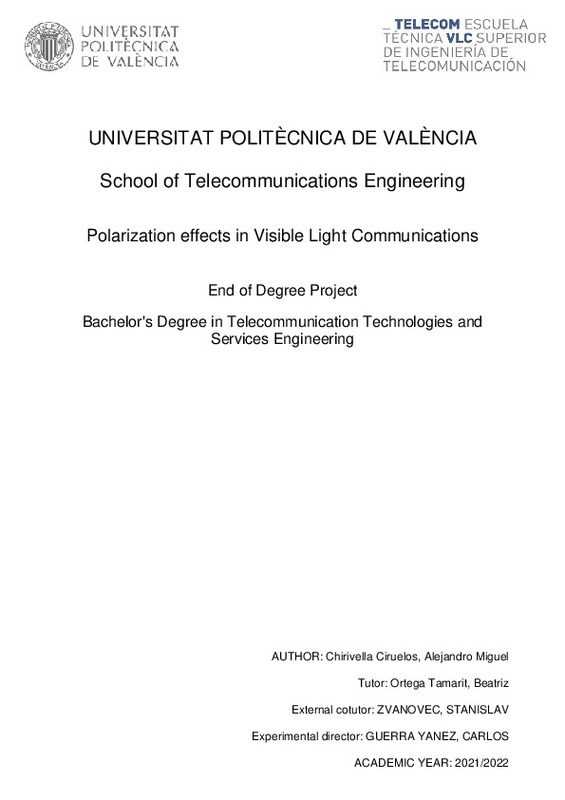|
Resumen:
|
[ES] Conseguir altas velocidades de datos es un reto fundamental en los sistemas de comunicación por luz visible (VLC). La limitación del ancho de banda viene dada principalmente por los diodos emisores de luz (LED) que ...[+]
[ES] Conseguir altas velocidades de datos es un reto fundamental en los sistemas de comunicación por luz visible (VLC). La limitación del ancho de banda viene dada principalmente por los diodos emisores de luz (LED) que se utilizan habitualmente como transmisores, lo que reduce el ancho de banda de modulación en bruto a unos pocos MHz. En la actualidad, se han registrado velocidades de transmisión de Gb/s basadas en cuatro métodos clave: (i) ampliación del ancho de banda mediante diseños de circuitos, que utilizan elementos de circuito para igualar el comportamiento capacitivo de los LED y los fotodetectores (PD); (ii) modulaciones avanzadas, que se utilizan para maximizar el número de bits/símbolos que pueden transmitirse en una sola longitud de onda; (iii) procesamiento digital de la señal (DSP), es decir, post-ecualización, que elimina la interferencia entre símbolos mediante el uso de diseños de filtros inteligentes; y (iv) multiplexación por división de longitud de onda. Un área de investigación de la que apenas se ha informado en los sistemas VLC es la multiplexación por división de polarización (PDM).
La tarea del trabajo será la evaluación del rendimiento de un esquema PDM para VLC. La topología del sistema que se evaluará se basa en el uso de elementos ópticos de división y combinación. El análisis se llevará a cabo configurando primero el sistema en condiciones de trabajo ideales, estudiando el comportamiento e introduciendo posteriormente diferentes perturbaciones.
[-]
[EN] Achieving high data rates is a key challenge in visible light communication (VLC) systems. A limitation on the bandwidth is introduced mainly by the light-emitting diodes (LEDs) that are commonly used as the transmitter, ...[+]
[EN] Achieving high data rates is a key challenge in visible light communication (VLC) systems. A limitation on the bandwidth is introduced mainly by the light-emitting diodes (LEDs) that are commonly used as the transmitter, which reduces the raw modulation bandwidth to a few MHz. At present, Gb/s transmission speeds have been reported based on four key methods including (i) bandwidth expansion by circuit designs, which uses circuit elements to equalize the capacitive behavior of LEDs and photodetectors (PDs; (ii) advanced modulations, which are used to maximize the number of bits/symbol that can be transmitted on a single wavelength; (iii) digital signal processing (DSP), i.e., post-equalization, which removes inter-symbol interference by using intelligent filter designs; and (iv) wavelength-division multiplexing. One area of research that has seldom been reported in VLC systems is polarization-division multiplexing (PDM).
The task of the bachelor thesis will be the evaluation of the performance of a PDM scheme for VLC. The system topology that will be evaluated is based on the use of splitting and combining optical elements. The analysis will be performed by first setting up the system under ideal working conditions, studying the behavior, and introducing different perturbations afterwards.
[-]
|







